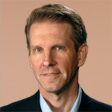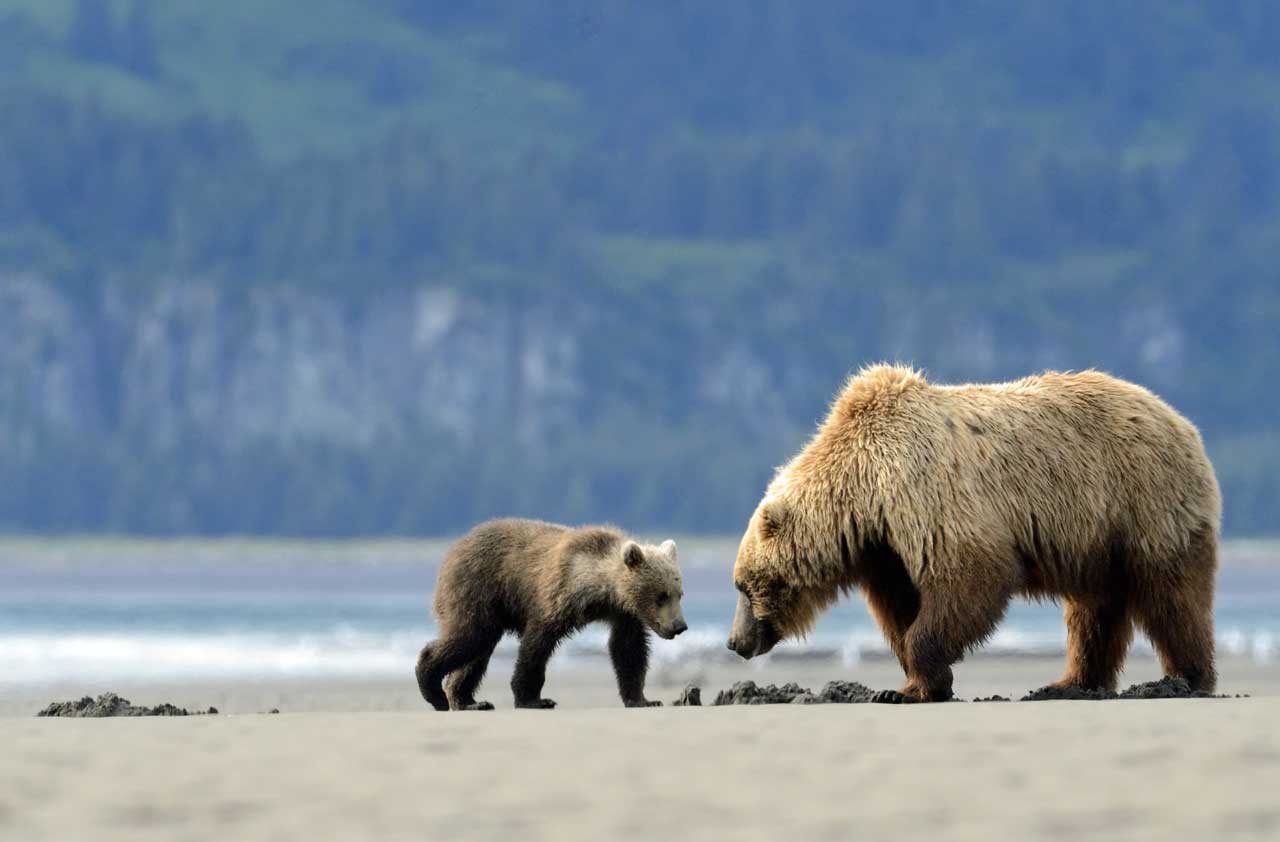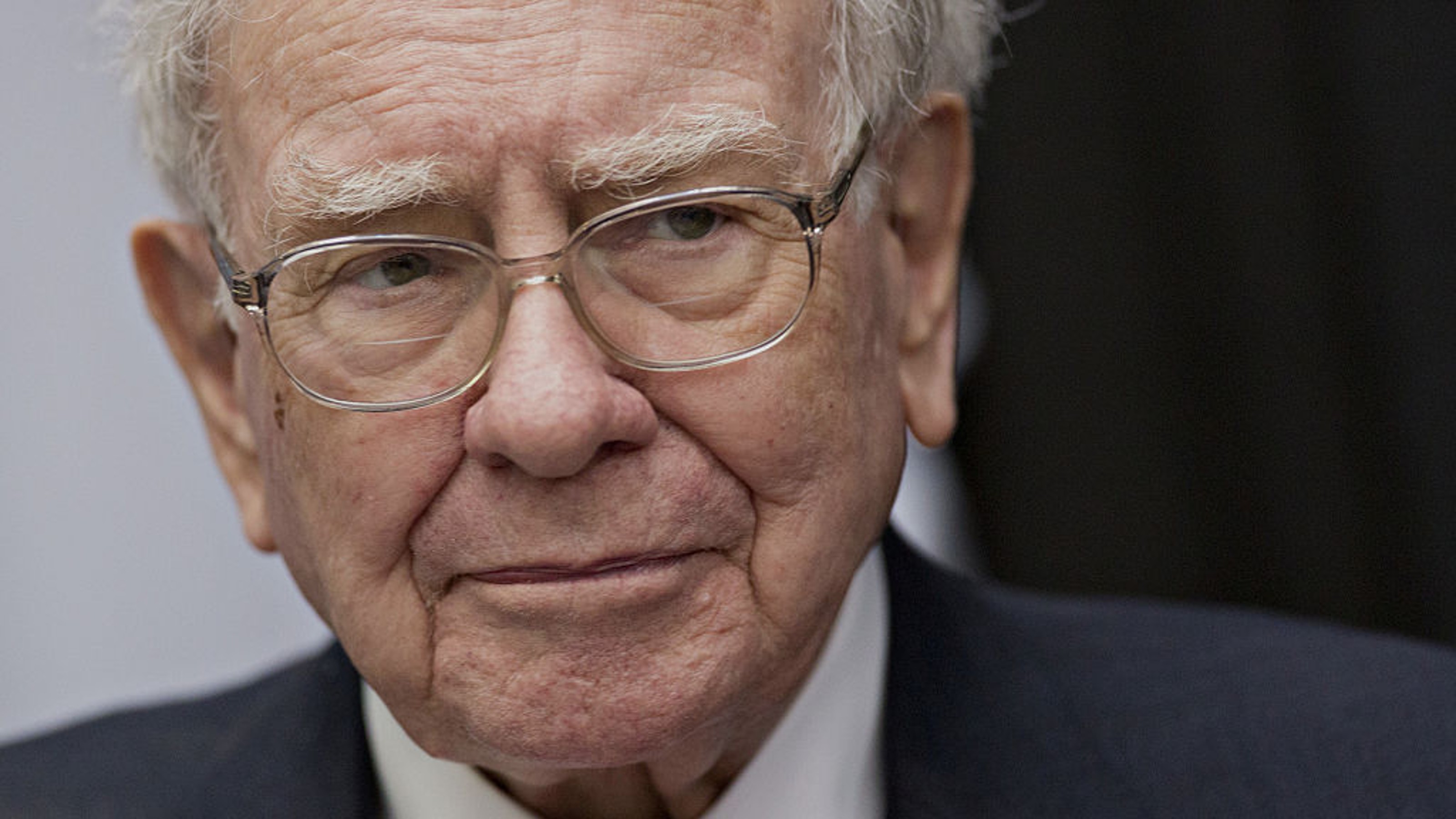8 Beaten-Down Stocks to Buy at Deep Discounts
The vicious stock selloff has rekindled fears of a bear market: a drop of at least 20% in major indexes from their highs.


The vicious stock selloff has rekindled fears of a bear market: a drop of at least 20% in major indexes from their highs. Standard & Poor’s 500-stock index is off just 8% from its peak. But for scores of stocks, the bear is already here.
If you believe in the adage “buy low, sell high,” the time to shop for stocks is when they’re unloved. With that in mind, we identified eight stocks that have fallen at least 20% from their 52-week highs. Our priority was to identify proven companies that are leaders in their industries and that have a strong chance of bouncing back from what’s ailing them. We avoided energy production companies because the slump in oil prices could persist for some time (although our list includes an oil pipeline company, and two companies that do a fair amount of business with energy firms).
There’s no guarantee our picks will rebound or even stop falling soon. But pinpointing the bottom in a stock is a feat few investors can master. Better to keep a watch list, and when you think you see long-term value, begin to move in. That strategy has helped make Warren Buffett a multibillionaire, and it can work for mere mortals, too.
Disclaimer
Stocks are listed alphabetically. Share prices and related data are as of August 21.

Alcoa
- Price: $8.73Market value: $11.4 billionDividend yield: 1.4%.Amount off 52-week high: 51%
- Business basics: Founded in 1888, Alcoa (symbol AA) is one of the biggest global miners and producers of aluminum, and a manufacturer of aluminum and titanium products. Sales peaked in 2007 at $31 billion and have since declined to an estimated $23 billion this year.
- What's gone wrong: Aluminum prices have crashed as production has ramped up worldwide, especially in China. The stock has retreated amid fears of a worsening metal glut as China’s economy slows further.
- Valuation: Although sales are expected to slip 2% this year, Alcoa is still turning a profit, with analysts expecting earnings of 73 cents per share over the next four quarters. The stock looks inexpensive, trading at a little more than 12 times that figure. Alcoa’s valuation measures have historically been lower than the overall market’s, but those discounts are now deeper than usual, according to Morningstar.
- Outlook: Alcoa aims to offset low raw aluminum prices by earning more on manufactured products, such as lightweight aluminum increasingly used in vehicles (including the redesigned Ford F-150 truck), planes and other industrial products. The company also is slashing refining costs to boost profits. Its strategy has been working, albeit slowly. Brokerage firms UBS and Deutsche Bank Securities say the stock has enough upside potential from current depressed levels to justify buy ratings.

Bed Bath & Beyond
- Price: $61.87Market value: $10.5 billionDividend yield: noneAmount off 52-week high: 22%
- Business basics: A leading retailer of home goods, the 44-year-old company operates 1,021 Bath & Beyond stores, 269 Cost Plus World Market stores, and such smaller chains as Christmas Tree Shops and Buy Buy Baby. After struggling through a period of flat earnings from 2005 to 2009, the company's results surged from 2010 to 2013, driving the stock to record highs.
- What's gone wrong: Although sales hit a record $11.9 billion in the fiscal year ended last February, net income has edged lower for two years. Per-share results, however, have continued to rise—to a record $5.07 last year—because the firm has bought back large amounts of stock. But tough competition and rising expenses (including for online development) have further depressed earnings this year, pulling the stock down by as much as 22% from its 52-week high.
- Valuation: With investors fearful of a deeper slowdown in growth at Bed Bath & Beyond (BBBY), the stock is priced at just 12 times estimated earnings of $5.22 per share for the fiscal year that ends next February. That's one of the lowest P/Es among big retailers.
- Outlook: Analysts have long praised the firm for its efficiency and for innovative merchandising. But like many retailers, it is squeezed by intense price competition from Amazon.com (AMZN) and by the need to invest heavily in its own online business. The payoff so far: sales from the company’s Web sites and mobile applications jumped 35% in the March-May quarter compared with the same period a year earlier, while total sales rose 3%. The bullish case is that over the long term earnings should get a boost from rising online sales, expansion into Canada and Mexico and growth of Bed Bath’s smaller chains. In the meantime, the company continues to buy back stock and generates enough cash flow to begin paying a dividend if it chooses. Brokerage Raymond James argues that "the longer-term reward outweighs the risk" at the current stock price.

Dolby Laboratories
- Price: $31.78Market value: $3.3 billionDividend yield: 1.3%Amount off 52-week high: 33%
- Business basics: Dolby (DLB) began as a sound-enhancing business 50 years ago. It now develops audio, imaging, and communication technologies for Hollywood studios, theaters, TV, computers and other media. Sales are expected to reach $974 million in the fiscal year that ends in September, mostly coming from licensing fees paid by companies that adopt Dolby technologies.
- What's gone wrong: Costs to develop new technologies have surged since 2011, while customers have been slow to sign up. Analysts expect Dolby to earn $1.65 per share over the next 12 months, down from a peak of $2.75 in the fiscal year that ended in September 2011.
- Valuation: Dolby’s price-earnings ratio is 19 based on estimated year-ahead earnings, but that doesn’t factor in about $6 per share in cash and short-term investments on the balance sheet; strip out that cash from the share price and the P/E drops to 16. Some of that cash could flow to shareholders via bigger dividends, according to JP Morgan Securities. Dolby just started paying dividends last year, at an annual rate of 40 cents per share.
- Outlook: Much of Dolby’s new technology aims to get people back into theaters. Dolby Vision technology deeply enhances colors on screens. Dolby Cinema, launched in 2014, melds new image and sound technologies for an “immersive” feel (such as the sound of a bird directly overhead). So far, just eight U.S. theaters have adopted Dolby Cinema. But more are in the pipeline. JPMorgan says Dolby is a buy because it sees the payoff accelerating from new technologies. The brokerage firm sees profits climbing to $1.90 per share in the fiscal year that ends in September 2016 and $2.27 in the 2017 fiscal year.

Fluor
- Price: $44.97Market value: $6.5 billionDividend yield: 1.9%Amount off 52-week high: 40%
- Business basics: One of the world’s biggest engineering and construction companies, Fluor (FLR) handles major projects in industries including energy, mining and utilities, as well as government jobs. Sales were $21.5 billion in 2014, and operating earnings were $4.48 per share that year.
- What's gone wrong: Fluor’s close ties to the energy and mining industries have hammered its prospects. Major projects in the oil-and-gas and mining industries are likely to be scrapped or downsized. The company in July slashed 2015 profits estimates from a range of $4.40 to $5.00 per share to $4.05 to $4.35.
- Valuation: Fluor’s P/E is 11 based on estimated profits of $4.21 per share over the next 12 months. Earnings aren’t expected to start climbing for a couple more years, though, and they could come down sharply if oil prices stay weak. Buying the stock now may be premature, though investors can pocket the dividend, which looks secure.
- Outlook: Few competitors can match Fluor's global scale, track record, know-how and financial strength. Brokerage firm Cowen & Co. recommends the stock, although it concedes that the company faces a tough slog until commodity prices recover. S&P Capital IQ sees shares creeping up to $53, at best, in the next 12 months. Until commodity prices stabilize, Fluor is likely to stay in bears’ clutches, though it's a great idea to keep on a watch list.

Intel
- Price: $26.56Market value: $126.3 billionDividend yield: 3.6%Amount off 52-week high: 30%Business basics: The king of chips used in personal computers, Intel (INTC) teamed up with Microsoft (MSFT) to usher in the PC era of the 1980s and ’90s. Intel has since expanded into semiconductors for such products as servers, tablets, phones and wearable tech. Sales hit a record $55.9 billion in 2014.
- What's gone wrong: Although Intel is highly profitable, sales growth in its core PC business has stalled, and it isn’t as dominant in new mobile technologies. Profits peaked at $2.39 per share in 2011, slid to $1.89 in 2013 and aren’t expected to top $2.39 again until 2017. Bulls pushed Intel’s share price to a 13-year high of nearly $38 last December, but the shares have pulled back.
- Valuation: Analysts estimate profits of $2.23 per share over the next 12 months, giving the stock a P/E of 12. That is among the lowest valuations for any chip stock, reflecting Wall Street’s doubts about future growth.
- Outlook: Bulls such as brokerage firm Canaccord Genuity pin their hopes on Intel capturing sales in the “Internet of Things” (turning things such as refrigerators into “smart” appliances), along with expanding sales of memory chips and computer servers. Likewise, research firm Needham & Co. sees profit margins picking up in Intel’s non-PC chip businesses. Needham thinks the stock could reach $37 in 12 months. Investors who believe Intel will generate more growth than Wall Street anticipates will collect a 3.6% dividend yield while waiting for results to improve.

Magellan Midstream Partners
- Price: $66.89Market value: $15.2 billionDistribution yield: 4.4%Amount off 52-week high: 26%Business basics: As a master limited partnership, Magellan (MMP) is like a tollbooth collector for the energy industry, reaping steady fees for the oil-and-gas products that flow through its pipelines and storage facilities. At 9,500 miles, its refined-products pipeline system is the nation’s largest. Magellan distributes most of its income to its investors (called unit holders). MLPs can pose tax headaches, however, so you should carefully weigh the pros and cons before investing.
- What’s gone wrong: Analysts worry that if energy prices stay low, pipelines and storage facilities will become less profitable. So far, though, Magellan’s earnings continue to rise. The firm’s fee income typically is set by long-term contracts and isn’t affected by short-term oil price swings. Second-quarter profits rose 22%, to 78 cents per unit, boosted by recent pipeline projects that have come online.
- Valuation: Analysts value MLP units based on the amount of cash they distribute to unit holders and the likelihood of those payments rising. Magellan in July declared a second-quarter distribution of 74 cents per unit, up 16% from a year earlier. That brings its annualized distribution rate to $2.96 per unit, resulting in a 4.4% yield at today’s price.
- Outlook: Other MLPs yield more than Magellan, but their income streams may not be as solid. Magellan recently raised its forecasts for cash flow, estimating that it will have 30% more cash available than it needs for distributions this year, and said it “remains committed” to increasing distributions by 15% for 2015 and “at least” 10% for 2016. The quality of Magellan’s assets make it a “top pick” among energy MLPs, says Morningstar analyst Peggy Connerty.

Swift Transportation
- Price: $19.97Market value: $2.8 billionDividend yield: noneAmount off 52-week high: 32%Business basics: Founded in 1966, Swift Transportation (SWFT) has become one of the largest U.S. trucking and logistics-services companies. The business was taken private in 2007 and went public again in 2010. Sales were a record $4.3 billion in 2014.
- What’s gone wrong: Transportation stocks have been weak all year on concerns that economic growth isn’t living up to expectations. But while Swift’s stock is down 32% from its peak, the business is still healthy. In the first six months of 2015, revenue, excluding fuel surcharges, rose 8% from the same period a year earlier, and per-share earnings rose 68%, to 62 cents.
- Valuation: Swift reiterated in July that it expects double-digit percentage profit growth in 2015, helped by shipping rate hikes and lower fuel costs. Over the next 12 months, analysts expect Swift to earn $1.83 per share, giving the stock a P/E of 11.
- Outlook: Finding and retaining good drivers is a major challenge for all trucking firms. Swift raised wages in August 2014 and again in May of this year. It now says it’s seeing a “positive impact” on driver retention. With its vast scale across North America, Swift should benefit from rising cross-border traffic to Mexico and Canada. One potential trouble spot: Swift has more than $1 billion in debt, a relatively high level for a company its size. But Swift has been paying off its debt, and brokerage BB&T Capital Markets says that even in a sluggish economy the company should be able to continue to do so while also funding growth.

United Rentals
- Price: $61.66Market value: $5.9 billionDividend yield: noneAmount off 52-week high: 49%
- Business basics: With nearly 900 rental centers in the U.S. and Canada, United Rentals (URI) is the largest lessor of commercial and industrial equipment, from forklifts to giant earthmovers to light tools. Leasing clients include builders, utilities and local governments. United earned a record $540 million in 2014 on sales of $5.7 billion.
- What's gone wrong: United is another victim of the oil slump. The energy sector accounted for about 11% of United’s sales before oil prices began to crash last year, and the steep fall in drilling activity has dented demand for some equipment.
- Valuation: United in July trimmed its outlook for revenue and for rental price increases for the remainder of the year, triggering another sharp drop in the stock. But the business is still growing. Analysts expect earnings of $7.85 per share this year and $8.58 in 2016. Based on estimated profits over the next 12 months, the stock’s P/E is just 8.
- Outlook: Activist investor Jana Partners took a 5.7% stake in United in the first quarter and in June said it believed the extent of the stock’s decline was unwarranted. Bulls say the company will benefit from a continued recovery in home building. Brokerage RBC Capital likes the stock, citing a long-term shift by equipment users to rent rather than own. One key risk: United’s $7.8 billion in long-term debt. If the economy slows further and sales retreat, the debt load could become hard to manage.
Get Kiplinger Today newsletter — free
Profit and prosper with the best of Kiplinger's advice on investing, taxes, retirement, personal finance and much more. Delivered daily. Enter your email in the box and click Sign Me Up.

-
 Stock Market Today: Stocks Soar on China Trade Talk Hopes
Stock Market Today: Stocks Soar on China Trade Talk HopesTreasury Secretary Bessent said current U.S.-China trade relations are unsustainable and signaled hopes for negotiations.
By Karee Venema
-
 2026 Disney Dining Plan Returns: Free Dining for Kids & Resort Benefits
2026 Disney Dining Plan Returns: Free Dining for Kids & Resort BenefitsPlan your 2026 Walt Disney World vacation now. Learn about the returning Disney Dining Plan, how kids aged three to nine eat free, and the exclusive benefits of staying at a Disney Resort hotel.
By Carla Ayers
-
 What Is the Buffett Indicator?
What Is the Buffett Indicator?"It is better to be roughly right than precisely wrong," writes Carveth Read in "Logic: Deductive and Inductive." That's the premise of the Buffett Indicator.
By Charles Lewis Sizemore, CFA
-
 The Cheapest Places To Retire in the US
The Cheapest Places To Retire in the USWhen you're trying to balance a fixed income with an enjoyable retirement, cost of living is a crucial factor to consider.
By Stacy Rapacon
-
 Why Is Warren Buffett Selling So Much Stock?
Why Is Warren Buffett Selling So Much Stock?Berkshire Hathaway is dumping equities, hoarding cash and making market participants nervous.
By Dan Burrows
-
 Bank of America Stock Falls As Warren Buffett Keeps Selling
Bank of America Stock Falls As Warren Buffett Keeps SellingBank of America stock is lower Wednesday on news Warren Buffett's Berkshire Hathaway sold another chunk of its stake in the bank. Here's what you need to know.
By Joey Solitro
-
 7 Stocks Warren Buffett Is Buying (and 10 He's Selling)
7 Stocks Warren Buffett Is Buying (and 10 He's Selling)Warren Buffett Warren Buffett's Berkshire Hathaway sold Apple and Snowflake but picked up Ulta Beauty and Heico, among other moves in Q2.
By Dan Burrows
-
 Why Did Warren Buffett Slash His Stake in Apple Stock?
Why Did Warren Buffett Slash His Stake in Apple Stock?Warren Buffett's Berkshire Hathaway dumped Apple, its top stock, by almost half.
By Dan Burrows
-
 Warren Buffett Adores Apple as Much as Ever
Warren Buffett Adores Apple as Much as EverBerkshire Hathaway trimmed its Apple stake because taxes are "likely" to go up "later."
By Dan Burrows
-
 Warren Buffett Stocks: A Look at Berkshire Hathaway's Holdings
Warren Buffett Stocks: A Look at Berkshire Hathaway's HoldingsWarren Buffett's holdings are a diverse set of blue chips and lesser-known growth bets. Here, we look at Buffett's stock picks, as well as those of his lieutenants.
By Dan Burrows
